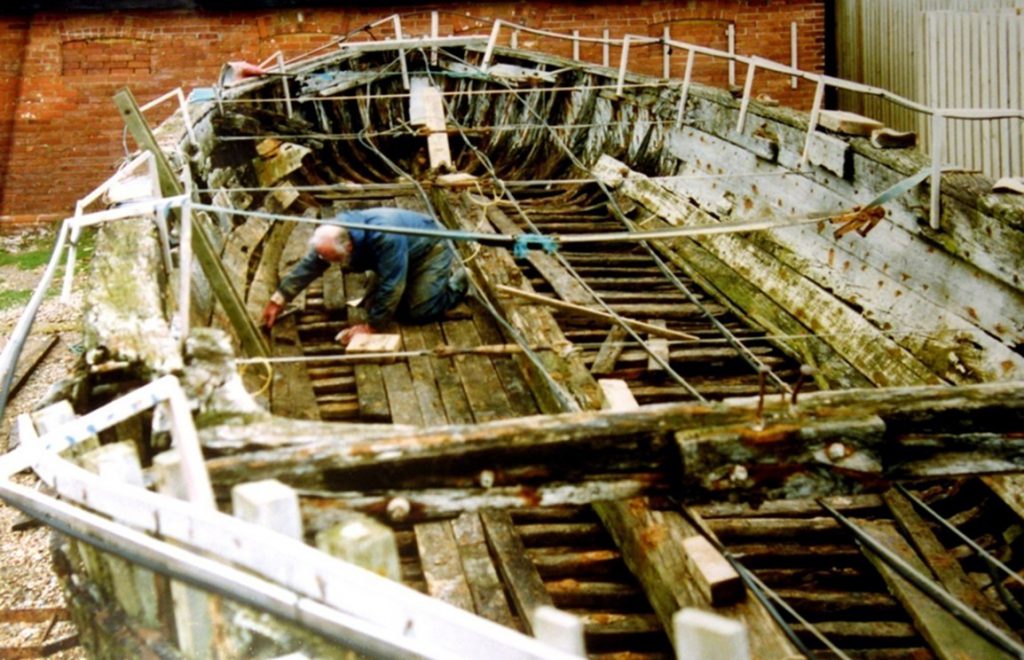This short article is not intended to be scholarly and detailed but only to make readers aware, if they are not so already, that barges played a big part in the history of Rye. Present-day Rye seems so divorced from its maritime past that it’s quite an effort of imagination to see it as it was.
Three main types of barge were to be found here: the river barge, the coastal barge and the ocean-going barge. Many were built in Rye. Specialist barges plied the three rivers Rother, Tillingham and Brede. They traded upstream to places like Winchelsea, Bodiam and Smallhythe, and downstream to Rye Harbour. The coming of the railway made them obsolete and thereby undermined much of the society and ancient character of the town.

The main picture shows the sad, rotting wreck of The Primrose, one of the last of the Rye barges. The story of her recovery in 1992 and removal to the Shipwreck Heritage Museum for conservation has been told by Haydon Luke in Rye News.
Coastal barges were common and traded around the coast into and out of Rye. Thames barges docked here frequently including the Olive Mary, Royal Oak and Leonard Piper. Ketch-rigged boomsail barges (boomies), with topsails, were built here, some by G&T Smith at Rock Channel.
It’s hard to believe now that barges built here in England were intended for trade with South America and for South American owners! But that is what happened. Some were intended for work on the Amazon for which their flat bottoms and shallow draught were suitable. Barges went out to British Guiana and Demerera. It is certainly possible that ocean-going barges called in at Rye as, indeed, other types of ocean-going ships were built here.
Rye was a thriving maritime town in the nineteenth century, buzzing with coastal and international trade and shipbuilding and it is worth noting that though the Appledore (Devon) shipyard was closed just over a year ago through lack of orders it is now planned to reopen it as Harland & Wolf (Appledore) so surely there is hope for Rye!
Image Credits: Kenneth Bird , Nautical Museum Trust .




Regarding the article about Rye barges you may be interested to know that as a result of a donation by The Cliff Trust of Lewes a new home has been secured for The Primrose in the yard behind The Shipwreck Museum in Hastings. While the museum is currently closed when it reopens The Primrosr will be on display under cover and consultants have been engaged to advise on the conservation of The Primrose.
It would be great at some time to return The Primrose to an appropriate heritage site in Rye but in the meantime people should be assured that the future of Rye Primrose is secure and now removed from the elements and the nesting birds its condition will not deteriorate further
It is likely that a fundraising campaign to help in the conservation of The Primrose will start when the museum reopens next Spring
Neil McClure
The Shipwreck Musem